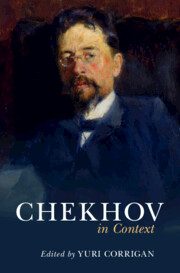Book contents
- Chekhov in Context
- Chekhov in Context
- Copyright page
- Contents
- Figures
- Contributors
- Foreword
- Note on Texts, Dates, and Transliteration
- Chronology
- Introduction
- Part I Life
- Part II Society
- Part III Culture
- Part IV Literature
- Chapter 21 Print Culture
- Chapter 22 Embarrassment
- Chapter 23 Tolstoy
- Chapter 24 French Literature
- Chapter 25 Modernism and Symbolism
- Chapter 26 Theatrical Traditions
- Chapter 27 Modern Theater
- Chapter 28 Chekhov’s Moscow Art Theater (1897–1904)
- Part V Afterlives
- Notes
- Further Reading
- Index
Chapter 25 - Modernism and Symbolism
from Part IV - Literature
Published online by Cambridge University Press: 16 February 2023
- Chekhov in Context
- Chekhov in Context
- Copyright page
- Contents
- Figures
- Contributors
- Foreword
- Note on Texts, Dates, and Transliteration
- Chronology
- Introduction
- Part I Life
- Part II Society
- Part III Culture
- Part IV Literature
- Chapter 21 Print Culture
- Chapter 22 Embarrassment
- Chapter 23 Tolstoy
- Chapter 24 French Literature
- Chapter 25 Modernism and Symbolism
- Chapter 26 Theatrical Traditions
- Chapter 27 Modern Theater
- Chapter 28 Chekhov’s Moscow Art Theater (1897–1904)
- Part V Afterlives
- Notes
- Further Reading
- Index
Summary
Lindsay Ceballos examines the circles of avant-garde Russian poets who grew up alongside Chekhov’s writing and who saw in Chekhov – among many other qualities – a “realist” antagonist, fellow symbolist, “poet of despair,” paragon of moral fortitude, and ultimately a larger-than-life embodiment of the Russian cultural edifice at the turn of the century.
- Type
- Chapter
- Information
- Chekhov in Context , pp. 191 - 197Publisher: Cambridge University PressPrint publication year: 2023

